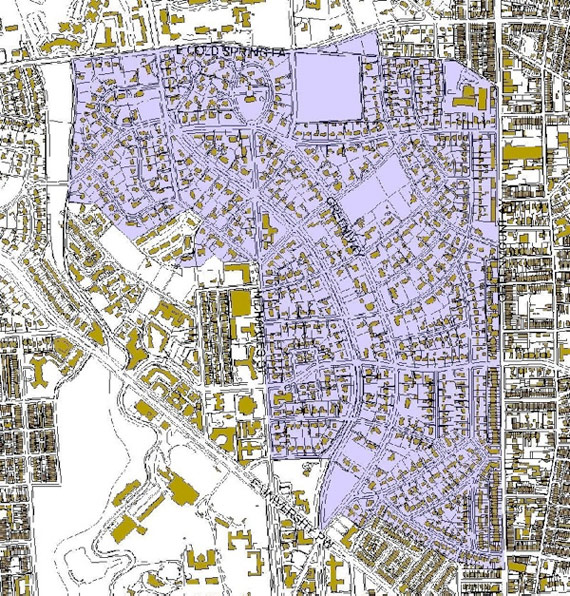Guilford Historic District
In recognition of its historic and architectural significance, Guilford in 2001 was designated a National Register Historic District. The National Register of Historic Places is the Nation’s official list of cultural resources worthy of preservation. Listings on the Register include districts, sites and buildings that are significant in American history, architecture and culture. The designation of Guilford recognizes the exemplary residential architecture and superior community landscape and planning design by Olmsted.
The Guilford Historic District also is noteworthy for its association with the suburbanization of Baltimore. It is a project of the Roland Park Company, which was responsible for several of Baltimore’s finest suburban developments beginning with Roland Park in the 1890s. The undertakings of the Roland Park Company are characterized by a comprehensive approach to all aspects of planning and construction, and an unfailingly high standard of quality in architecture and landscape design. The district derives additional significance as an example of a type of suburban development characteristic of the period. Laid out under the direction of Frederick Law Olmsted, Jr. the development reflects Olmstedian landscape design principles in its curvilinear streets and respect for existing topography and vegetation. The houses constructed within Guilford exemplify a variety of early 20th century revival styles, and exhibit a consistently high degree of quality in their design and construction.
In addition to the recognition, the historic designation also brings enormous benefits to Guilford property owners. An owner of a home in an historic district is eligible for tax credits for qualified restoration work performed on the home. The Heritage Preservation Tax Credit Program administered by the Maryland Historical Trust is described here and at the following link:
https://mht.maryland.gov/taxcredits_homeowner.shtml

Boundaries of historic district
